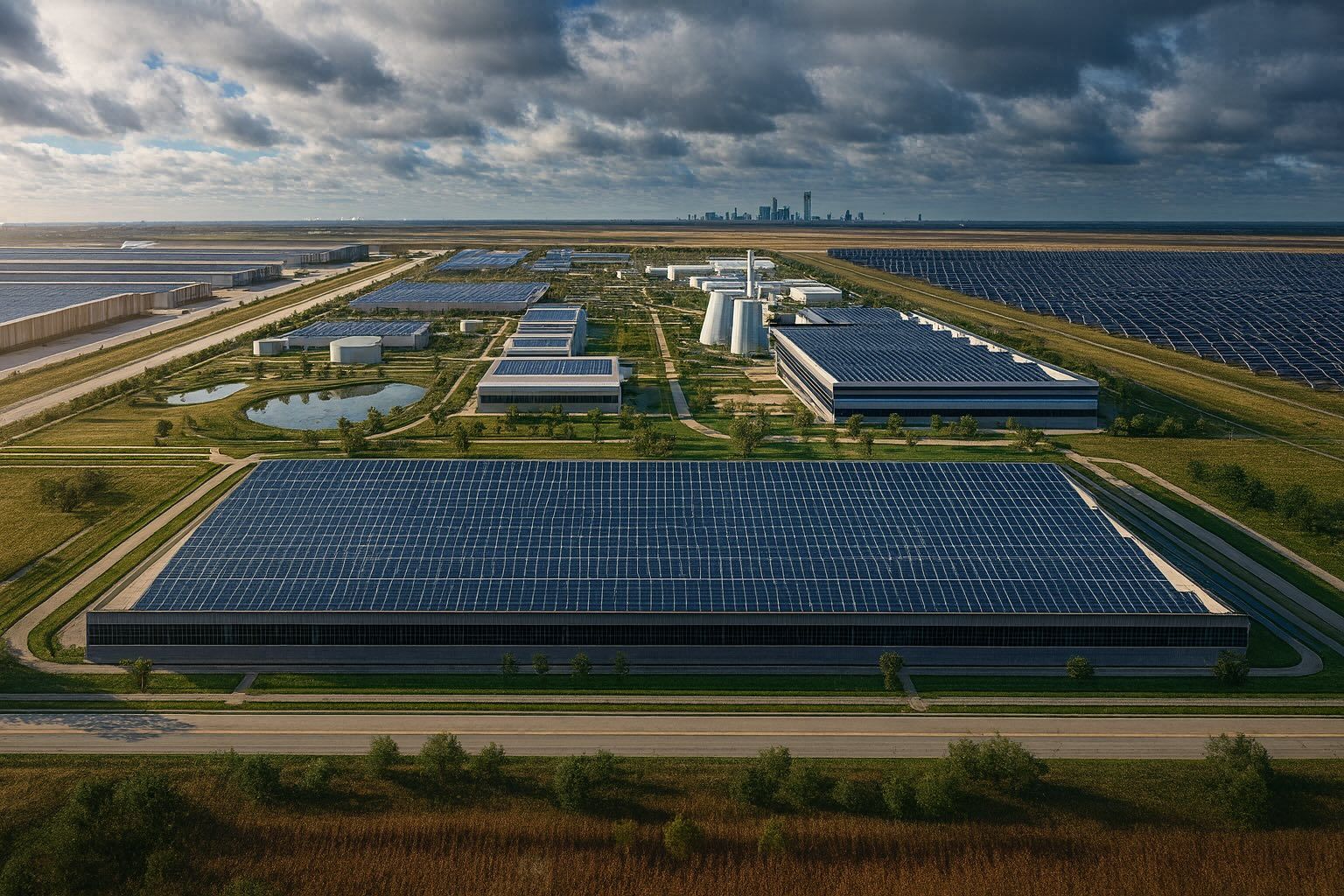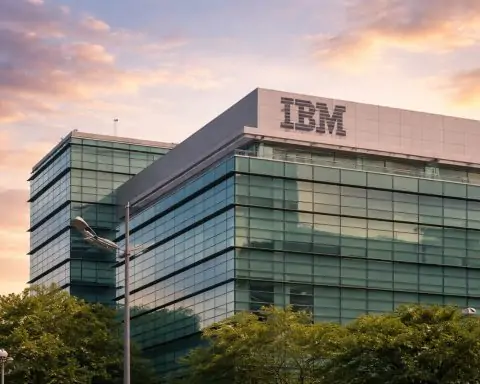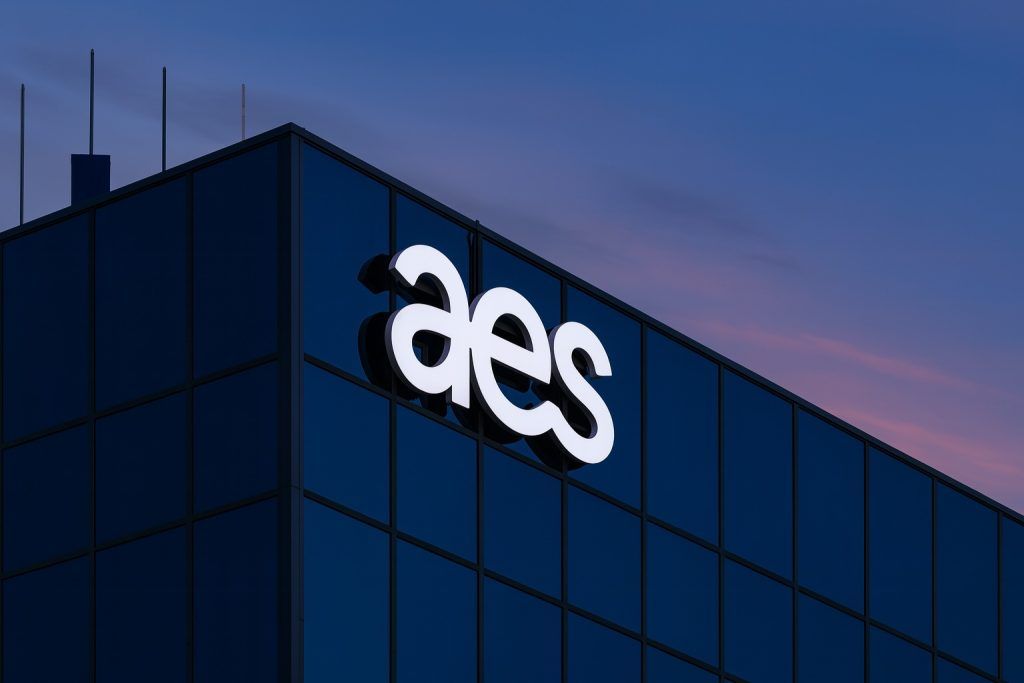- Record IPO for an AI Infrastructure Startup: Fermi America, co-founded by former U.S. Energy Secretary Rick Perry, raised $682.5 million in its September 2025 IPO, selling 32.5 million shares at $21 each [1]. The debut valued Fermi at roughly $13–15 billion. Shares opened around $25 on Nasdaq on Oct. 1 (a ~19% jump) and a dual London listing followed on Oct. 2 under ticker FRMI [2] [3].
- Massive “HyperGrid” Project: Fermi plans a 5,000+ acre AI campus near Amarillo, Texas (leased from Texas Tech University) called Project Matador or the “HyperGrid.” The project will co-locate huge data centers with on-site power plants. It aims to deliver 1.1 GW of power by 2026 and up to 11 GW at full build-out (about five Hoover Dams’ worth) via nuclear reactors, natural gas, solar and battery storage [4] [5].
- Political Ties and Big Ambitions: Rick Perry and energy-industry veteran Toby Neugebauer co-founded the REIT in January 2025. Perry calls the effort a “modern-day Manhattan Project” [6] for AI. Fermi secured $350 million in prior financing and is pursuing DOE loans and NRC approvals for new reactors [7] [8]. Macquarie Group led a $100M Series C and a $250M loan to support initial phases [9] [10].
- AI Infrastructure Boom: Investors have been eager for AI-related real estate plays. Fermi follows data-center REITs like CoreWeave and WhiteFiber, which have seen strong IPO gains. Analysts say surging demand for AI compute (“Gold rush for AI infrastructure”) helped Fermi’s success [11] [12]. Yet experts caution: Fermi is pre-revenue with ambitious goals, and “the devil is in the details” for execution [13] [14].
The AI Data Center Gold Rush
As artificial intelligence usage explodes, so do the needs for massive data centers and the electricity to run them. Modern AI workloads (think training large language models) consume enormous power, straining local grids. Indeed, global data-center electricity use – about 1.5% of today’s power – is projected to double by 2030 driven by AI demand [15]. This creates a premium for companies that can offer co-located compute and guaranteed power. New “AI factories” are on the rise: big tech firms and startups alike are building hyperscale facilities and even investing in their own power plants (for example, Nvidia and Meta’s AI campus plans). In this context, Fermi America emerged to provide an all-in-one solution: a huge energy and data hub for AI companies.
Fermi America: Perry’s Energy-Data Venture
Fermi America is an energy real-estate investment trust (REIT) launched in January 2025. Its backers include former Texas Governor and Trump-era Energy Secretary Rick Perry and Toby Neugebauer (ex-Quantum Energy). The company pitched itself as solving AI’s twin challenges: compute space and power. Perry’s vision is to build the world’s largest private power grid and data campus. Fast Company notes that Fermi’s website (and IPO filings) describe a “HyperGrid” on 5,236–5,769 acres of North Texas land [16] [17], near the Department of Energy’s Pantex nuclear weapons plant. Fermi says it will lease the land from Texas Tech University.
According to its SEC filings, Fermi has no existing revenue – it’s a pure development-stage play. But it already raised non-IPO funding: a $350M cash hoard including a $100M Series C led by Macquarie Group and a $250M loan to buy initial gas turbines [18] [19]. It has also applied for federal aid: Fermi says it’s in “pre-approval” with DOE’s loan program to fund key infrastructure, and even working on NRC filings for Westinghouse reactors on site [20].
Project Matador – Building an Energy-Data Colossus
Project Matador is Fermi’s flagship “AI campus.” The plan unfolds in phases:
- Phase 1 (by end-2026): Build about 2.6 million sq ft of data center space and generate ~1.0–1.1 GW of power. Initially this uses purchased grid power, temporary gas turbines, solar and batteries [21] [22].
- Phase 2 (2027): Add ~1 million sq ft more and 0.8 GW generation (permanent gas turbines) [23].
- Phases 3–4 (beyond 2027): Deploy advanced nuclear power. Fermi has agreements with Westinghouse to build four 1.15 GW reactors (AP1000 designs and small modular AP300s) on site. First reactor slated by 2031–32, reaching 11 GW total by 2038 [24] [25].
In its IPO filing, Fermi emphasizes low-carbon “hyper-redundant” power: “deliver up to 11 GW of power” by 2038, with 56% nuclear in the mix [26] [27]. The campus will be “behind the meter,” meaning Fermi’s tenants (hyperscale AI firms) draw directly from the co-located plants. Fermi claims to have letters of intent with anchor tenants (AI developers, cloud companies) for 20-year leases [28] [29]. So far, however, no binding contracts have been announced. CEO Neugebauer acknowledges that signing high-quality tenants is “critical” to finance the build-out [30].
Historic Dual IPO and Market Debut
On Sept. 30, 2025, Fermi filed registration statements for a U.S. IPO and London listing. It initially targeted a $450–550 million raise at $18–$22 per share for 25 million shares. Strong demand led to an upsized deal: 32.5 million shares at $21, raising $682.5 million [31]. Haynes Boone, the law firm on the deal, touted it as the first simultaneous dual Nasdaq–London listing this century [32]. After pricing, trading began Oct. 1: the stock opened at $25, valuing Fermi near $14.8B [33].
Bloomberg Law reports the IPO made Fermi the first company in 30 years to launch a same-day Nasdaq and LSE listing [34]. UBS, Evercore, Cantor Fitzgerald and Mizuho were joint lead underwriters [35]. Fermi has the usual overallotment (“greenshoe”) option: the underwriters can buy an extra ~4.875M shares within 30 days to stabilize trading [36].
The market reaction was swift. Fermi’s shares jumped ~19% on debut [37], reflecting “surging investor enthusiasm for AI infrastructure stocks” [38]. This lifted the post-IPO market cap close to $15 billion (versus the IPO’s $12.5B) [39]. Research firm Renaissance Capital’s Matt Kennedy called it “a cash geyser” – evidence of a gold rush for AI infrastructure [40] [41].
What Experts Say
Analysts point to several tailwinds: global AI compute demand, the lure of nuclear energy, and the founders’ profiles. Renaissance’s Kennedy notes “no question they’re selling into a lot of demand for AI infrastructure right now” [42]. Mergermarket’s Troy Hooper adds that Fermi’s political connections (Perry’s stature) act as a “tailwind,” helping draw investor interest [43]. Perry himself, likening the project to a national endeavor, told Reuters: “I’ve never been involved with anything… more intriguing… this is our modern-day Manhattan Project” [44].
Property/tech press was similarly upbeat. Propmodo’s Travis Barrington noted that despite no revenue, “investors poured into the offering, underscoring the rush of capital toward companies tied to AI infrastructure” [45]. The motivation is clear: Fermi promises to solve future power bottlenecks for the cloud. It already has state and federal backing attempts – even Secretary Perry cites recent federal focus on nuclear permitting as “favorable” for Fermi [46].
Risks and the Road Ahead
Yet many experts urge caution. Fermi is highly speculative. It has no operating history, and its ability to deliver 11 GW depends on complex construction and regulation. As Propmodo warns, history offers “a cautionary note”: pre-revenue dot-com and SPAC companies often faltered after IPO hype [47]. Fermi’s IPO filing even stresses multiple risks: securing capital, building large gas turbines, getting regulatory approvals, and lining up a construction workforce [48]. University of Texas researcher Joshua Rhodes bluntly says: “The devil is in the details… Whether they get all the way to 11 GW is an open question” [49].
Execution risk looms. The company estimates $2 billion will be needed just through 2027 (Phase 1) [50]. It has to finalize DOE loan approvals, NRC reactor licenses, environmental permits, and grid connections. Anchor tenants must commit – otherwise Fermi’s plan could face delays [51]. Interest rates and inflation also pose macro risks to capital costs (noted by analysts [52]). If the promised clean nuclear component stalls, the grid may face shortages (as other reports show AI data centers have already driven up power prices in some regions [53]).
AI Data Centers and Energy: The Bigger Picture
Fermi’s story reflects a broader trend: data centers are morphing into energy projects. A recent IEA forecast noted that global data center electricity use will more than double by 2030 thanks to AI [54]. In some U.S. localities, new AI campuses have already caused wholesale power prices to spike over 200% [55]. This spurred state initiatives and federal interest (DOE is reportedly seeking proposals for AI data power infrastructure [56]).
Fermi taps into these dynamics by pairing compute space with guaranteed power supply. If successful, it could secure long-term “base load” revenues from cloud giants [57]. Fermi’s Haynes Boone lawyers even note that its $11 GW/18M sq ft campus would be one of America’s largest private infrastructure projects [58]. It is now being likened to industry pioneers: its backers emphasize that with its energy-integrated REIT model, Fermi could sit at the frontier of a projected $691 billion data-center market (10%+ CAGR) [59].
Conclusion
In sum, Fermi’s IPO tells us that investors are eager to bankroll once-unthinkable AI infrastructure ventures, even on the strength of a PowerPoint-level plan. Backed by a high-profile team and record dual listing, Fermi has today’s capital markets’ attention. As Renaissance’s Kennedy puts it, the company’s success “speaks to the gold rush happening in AI infrastructure right now” [60]. Yet, as one observer cautions, betting on Fermi is a bet that visioneering can become reality – and that AI tenants will indeed “come” once the giant power plant and data centers are built [61].
Sources: Current news and filings on Fermi America’s IPO and plans [62] [63] [64] [65], including Reuters, Newsweek, Fast Company, Propmodo, E&E/Politico, and industry analyses [66] [67] [68] [69]. All data cited are as reported in these sources.
References
1. www.reuters.com, 2. www.reuters.com, 3. www.haynesboone.com, 4. www.reuters.com, 5. propmodo.com, 6. www.reuters.com, 7. www.eenews.net, 8. www.ainvest.com, 9. www.eenews.net, 10. www.ainvest.com, 11. www.reuters.com, 12. propmodo.com, 13. propmodo.com, 14. www.eenews.net, 15. www.nature.com, 16. www.latitudemedia.com, 17. www.eenews.net, 18. www.latitudemedia.com, 19. www.eenews.net, 20. www.eenews.net, 21. neutronbytes.com, 22. www.eenews.net, 23. neutronbytes.com, 24. neutronbytes.com, 25. www.eenews.net, 26. www.eenews.net, 27. www.reuters.com, 28. propmodo.com, 29. www.eenews.net, 30. www.eenews.net, 31. www.reuters.com, 32. www.haynesboone.com, 33. www.reuters.com, 34. news.bloomberglaw.com, 35. www.investing.com, 36. www.investing.com, 37. www.reuters.com, 38. www.reuters.com, 39. www.reuters.com, 40. propmodo.com, 41. www.reuters.com, 42. www.reuters.com, 43. www.reuters.com, 44. www.reuters.com, 45. propmodo.com, 46. www.eenews.net, 47. propmodo.com, 48. www.eenews.net, 49. www.eenews.net, 50. www.eenews.net, 51. www.eenews.net, 52. www.ainvest.com, 53. www.tomshardware.com, 54. www.nature.com, 55. www.tomshardware.com, 56. neutronbytes.com, 57. www.eenews.net, 58. www.haynesboone.com, 59. www.ainvest.com, 60. propmodo.com, 61. www.reuters.com, 62. www.reuters.com, 63. www.reuters.com, 64. propmodo.com, 65. www.eenews.net, 66. www.reuters.com, 67. propmodo.com, 68. www.ainvest.com, 69. www.eenews.net









